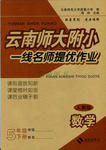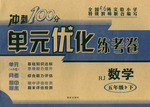题目内容
阅读理解
Boxing was long viewed sickly. Generally forbidden by law in earlier days, the fighting was usually done with barefists, and matches often lasted forty or fifty rounds.
In 1882 John L. Sullivan, a fighter of great power, won the world heavyweight championship from Paddy Ryan in a bare-fisted battle marked by hitting, scratching, and biting without any rule. Five years later, while fighting Patsy Cardiff at Minneapolis, Sullivan broke his right arm in the third round, but he continued fighting to the sixth round and won. In 1889, Sullivan defeated Jake Kilrain with his bare fists in another championship fight, winning twenty thousand dollars and a diamond prize medal. His admirers talked then of tuning him for the neat governor, but he traveled to Australia for a boxing tour instead, coming back only, to lose his title in a twenty-one-round match with a young Californian named James J. Corbels.
“Genfieam James” victory, in this match marked a turning point, for it showed scientific boxing was over strength. But Corbetts' title ended in 1897, when another boxer, Bob Fitssimmons, in less than three seconds, achieved his feats and then Fitzsimmons knocked out an Irishman, won the heavyweight championship of the world, and invented the terrible “solar plexus punch.”
1.Boxing matches in the early days were ________.
[ ]
A.short and bloody
B.usually spare-time competitions
C.governed by strict rules
D.cruel
2.Sullivan held the world's heavyweight title for ________.
[ ]
A.at least seven years
B.only a year
C.five days
D.twenty-one years
3.Sullivan's fight with Kilrain was ________.
[ ]
A.the first boxing championship match
B.a bare-fisted championship fight
C.the last boxing match to be fought barefisted
D.a six-round match

 云南师大附小一线名师提优作业系列答案
云南师大附小一线名师提优作业系列答案 冲刺100分单元优化练考卷系列答案
冲刺100分单元优化练考卷系列答案
| |||||||||||||||||||||||||||||||||||||||||||||
| |||||||||||||||||||||||||||||||||||||||||||||
| |||||||||||||||||||||||||||||||||||||||||||||||||||||||||||